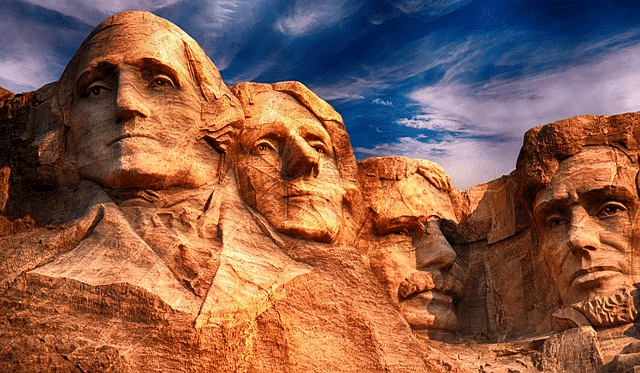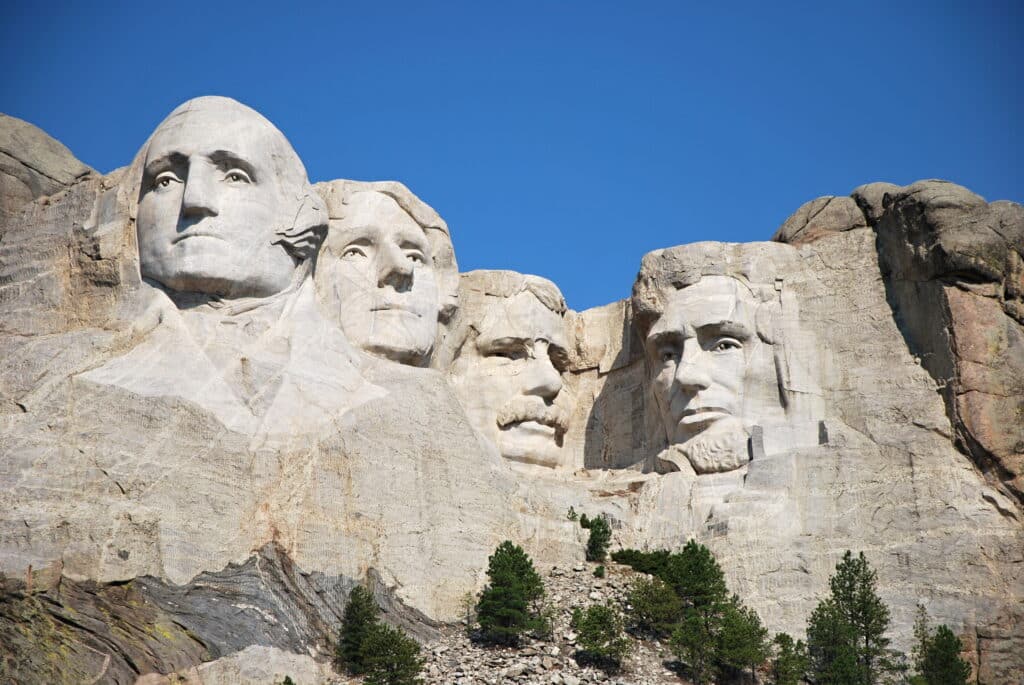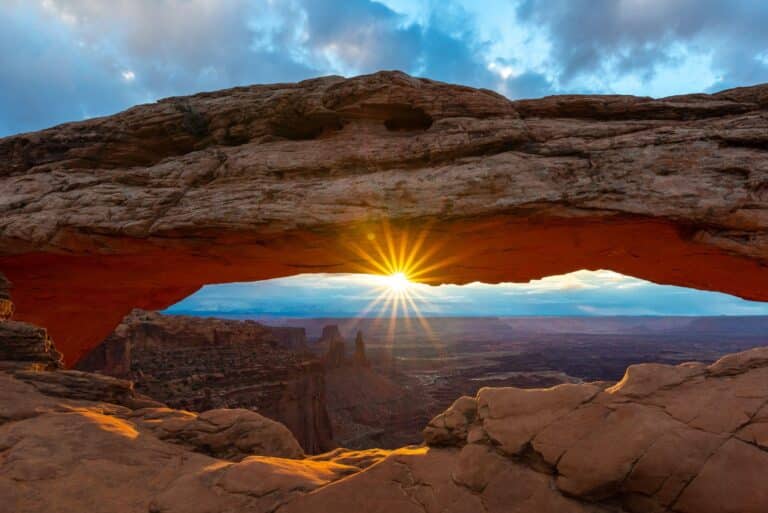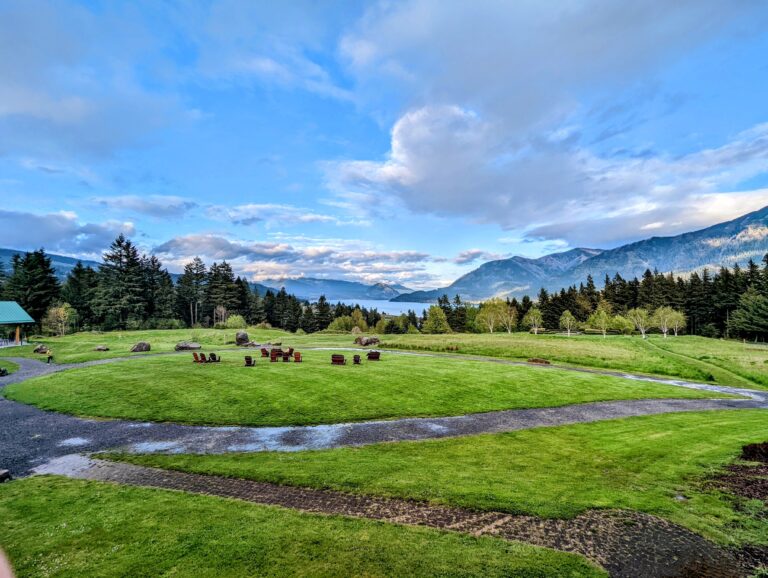An Ultimate Guide to National Monuments in the US

Our content may include affiliate links, through which we earn a small commission on purchases. Want to learn more about us? Read here.
Are you ready to journey through time and space, discovering the wonders of the National Monuments USA? Brace yourself for an adventure that will take you from the vast landscapes of New Mexico and Arizona to the fascinating world of fossil beds and beyond!
We will delve into the creation, management, and evolution of these awe-inspiring landmarks, uncovering the stories and secrets they hold. So, let’s begin our exploration of the mesmerizing world of National Monuments!
Short Summary
- Explore the history and beauty of US National Monuments, from ancient Puebloan sites to Grand Canyon-Parashant.
- Discover how 18 presidents have protected 159 monuments through the Antiquities Act, and eight federal agencies are dedicated to preserving them.
- Plan a visit for an unforgettable experience exploring trails, exhibits & scenic overlooks in US territories!
Exploring National Monuments in the USA

The United States is home to over 130 National Monuments, including Montana National Monuments, and many people often wonder, how many national monuments are there exactly?
Among these, most national monuments are protected by the National Park Service and the Bureau of Land Management, ensuring the preservation of remarkable sites like the breathtaking Cedar Breaks National Monument in Utah and the fascinating Missouri National Monuments for future generations to explore and enjoy.
Whether you’re admiring the iconic Statue of Liberty National Monument in New Jersey or bearing witness to the thrilling canon firing at Castillo De San Marcos National Monument in Florida, each monument offers a unique experience that showcases the nation’s rich heritage and stunning beauty, including the remarkable Jersey national monuments statue.
Unique National Monuments in New Mexico
New Mexico boasts some truly astounding National Monuments, with White Sands and Bandelier being two of the most prominent. The White Sands National Park, the newest in the US, offers a captivating history and breathtaking natural wonders. Here, you can marvel at the world’s largest gypsum dune field and immerse yourself in a surreal landscape.
On the other hand, the Bandelier National Monument allows you to step back in time as you explore the captivating history and breathtaking natural wonders of this ancient Puebloan site. At the same time, the Carrizo Plain National Monument offers a different experience with its unique landscape. In a similar vein, the Colorado National Monument provides an unforgettable experience for visitors.
As you venture through New Mexico, don’t miss the opportunity to witness the impressive Natural Bridges National Monument, where three majestic natural bridges stand as a testament to the power of water, wind, and time.
Whether you’re hiking through the picturesque landscapes or learning about the rich cultural history of the region, a visit to New Mexico’s National Monuments will leave you with memories that last a lifetime.
The Jaw-Dropping National Monuments In Arizona
Arizona is home to some of the most unique and awe-inspiring National Monuments in the United States. Explore the breathtaking Grand Canyon-Parashant National Monument, where the vast expanse of the Grand Canyon stretches out before you, showcasing the incredible geological formations that have been sculpted over millions of years.
Managed by the Bureau of Land Management, this remote treasure is a testament to the power of nature and its ability to create unparalleled beauty.
A visit to Arizona isn’t complete without making a pit stop at the Montezuma Castle National Monument. It’s certainly a must-visit destination in the state. Located in the Verde Valley, this remarkable site is managed by the National Park Service. It features an incredible five-story cliff dwelling once home to the Sinagua people.
As you explore the ancient ruins and immerse yourself in the region’s rich cultural heritage, you’ll gain a deeper appreciation for the ingenuity and resilience of the Ancestral Puebloans who once called this land their home.
The Creation and Management of National Monuments
The creation of National Monuments is made possible thanks to the Antiquities Act of 1906, a groundbreaking law that empowers US presidents to protect public land for future generations without relying on Congress to pass legislation.
Since its inception, this act has been used by 18 presidents to establish a staggering 159 National Monuments, ensuring that these incredible sites remain preserved for all to enjoy.
Managing these invaluable treasures is complex, with up to eight federal agencies from five different departments working in unison to ensure their protection.
This collaborative effort involves organizations such as the National Park Service, the Bureau of Land Management, and the U.S. Fish and Wildlife Service, each bringing their expertise and resources to safeguard the nation’s cultural and natural heritage.
While the management goals of these agencies may differ, their shared commitment to preserving the beauty and significance of National Monuments is unwavering.
The Antiquities Act and Presidential Proclamations
The Antiquities Act is a cornerstone of the US National Monument system, granting the president the authority to protect federal land by designating it as a National Monument. Since its inception, numerous presidents have exercised this power, creating 161 astonishing National Monuments that showcase the nation’s diverse natural, cultural, and scientific wonders.
This empowering law allows the president to act swiftly in the face of threats to the nation’s heritage, ensuring that invaluable sites are protected for all to appreciate and enjoy. The Antiquities Act recognizes the importance of preserving these treasures.
It states that the land set aside to do so should be as limited as possible while still allowing for proper management and protection of the identified objects.
This focus on careful preservation is a testament to the enduring significance of the National Monument system and its role in safeguarding the nation’s rich history and natural splendor.
Congressional Legislation and Management Agencies
While the Antiquities Act empowers the president to create National Monuments, Congress can also establish these treasured sites through legislation. To date, Congress has created an impressive 40 National Monuments, contributing to the vast array of protected areas that showcase the nation’s incredible cultural and natural heritage.
The management and protection of National Monuments is a collaborative effort involving multiple federal agencies, such as the National Park Service, the Bureau of Land Management, and the U.S. Fish and Wildlife Service. Each agency brings unique expertise and resources to the table, ensuring these remarkable sites are preserved for generations.
Through their combined efforts and dedication, the management agencies play a crucial role in maintaining the integrity and beauty of the nation’s National Monuments, allowing visitors to experience the wonders of these awe-inspiring landmarks.
Fossil Beds and Other Unique National Monuments
Fossil Beds National Monuments offer a fascinating glimpse into the ancient past, preserving the remnants of plants and animals that once roamed the earth millions of years ago.
The John Day Fossil Beds National Monument in Oregon is a prime example of these captivating sites, boasting a world-class record of plant and animal evolution, changing climate, and a fossil record spanning an incredible 40 million years.
In addition to fossil beds, the United States is home to a diverse array of unique National Monuments that showcase the nation’s varied natural and cultural heritage, including South Dakota National Monuments.
From the pristine white sands of New Mexico’s White Sands National Monument to the rugged landscapes of Utah’s Grand Staircase-Escalante National Monument and the towering majesty of Wyoming’s Devils Tower National Monument, these sites offer endless opportunities for exploration, inspiration, and discovery.
Comparing National Parks and Monuments
National Monuments and National Parks may seem similar at first glance, but there are key differences between these two types of protected areas. While National Monuments tend to be smaller and focus on preserving objects of historic or scientific interest, National Parks are established by Congress to protect larger areas of natural, cultural, or recreational importance for future generations to enjoy.
The creation process for these protected areas also differs, with National Monuments being established by the President using the Antiquities Act, while National Parks require congressional legislation. However, both National Parks and Monuments share a common goal: to preserve the nation’s natural and cultural heritage for the enjoyment and education of present and future generations.
A Closer Look at State-Specific National Monuments
Across the United States, 31 states boast their own unique National Monuments, each reflecting the diverse beauty and history of the nation, from the towering majesty of California’s Giant Sequoia National Monument to the ancient history preserved at Utah’s Navajo National Monument.
And even the stunning landscapes of Idaho National Monuments, these state-specific sites offer visitors the opportunity to delve deeper into the rich tapestry of the country’s natural and cultural heritage.
Visitors to these monuments can explore the unique features of each site, from the towering redwoods of California to the ancient cliff dwellings of Utah. They can also learn about the area’s history from Native American history.
California’s Giant Sequoia National Monument
California’s Giant Sequoia National Monument is a testament to the power and beauty of nature, protecting approximately two-thirds of all giant sequoia trees in the world. Established in 2000, this awe-inspiring monument spans 328,315 acres and is home to some of the oldest living organisms on Earth.
The Giant Sequoia National Monument is a sanctuary for these ancient trees, a habitat for diverse wildlife, and a popular destination for outdoor enthusiasts.
Whether hiking through the ancient forests, camping under the stars, or fishing in the pristine waters, visiting the Giant Sequoia National Monument offers a chance to reconnect with nature and marvel at the wonders of the world’s largest living organisms.
Educational programs and guided tours provide further opportunities to learn about the monument’s unique ecology and the ongoing efforts to preserve it for future generations.
Utah’s Navajo National Monument
Utah Navajo National Monument is a fascinating window into the past, preserving the centuries-old dwellings of the Ancestral Puebloans. This Native American culture flourished in the region from 500 to 1300 AD.
This ancient site, nestled in the heart of southeastern Utah, is home to the remarkable cliff dwellings of Betatakin and Keet Seel, offering a unique insight into the lives of the people who once inhabited the area.
A visit to the Navajo National Monument allows one to explore these captivating ruins, hike the scenic trails, and learn about the rich cultural heritage of the Ancestral Puebloans. The monument’s Visitor Center, museum, and various overlooks offer a wealth of information and breathtaking views of the surrounding landscape, making it a must-visit destination for history enthusiasts and nature lovers alike.
Planning Your Visit to US National Monuments
When planning a visit to US National Monuments, it’s essential to research the specific monument and its location to ensure an unforgettable experience.
The best time to explore these treasures is during the cooler months when temperatures are more comfortable for outdoor activities. Don’t forget to stay hydrated throughout the day, as this will help you stay energized and make the most of your time at each site.
Planning to spend a full day at each site is recommended to appreciate the beauty and significance of each National Monument truly. This will give you ample time to explore the various trails, exhibits, and scenic overlooks, immersing yourself in each monument’s unique history and natural wonders.
Notable National Monuments in US Territories
Beyond the 50 states, US territories are also home to many notable National Monuments that showcase the nation’s diverse natural and cultural heritage. Governors Island National Monument in New York, the Virgin Islands Coral Reef National Monument, and the Minidoka Internment National Monument are just a few of the remarkable sites found in these territories.
In the Minor Outlying Islands, the awe-inspiring Papahnaumokukea Marine National Monument and the breathtaking Pacific Remote Islands Marine National Monument protect vast expanses of pristine marine ecosystems, offering an unparalleled opportunity to explore the wonders of the ocean and its diverse inhabitants.
These important sites preserve the nation’s natural and cultural treasures and serve as a testament to the ongoing commitment to the conservation and protection of our shared heritage.
The Evolution of National Monuments
Since the inception of the Antiquities Act in 1906, the United States has seen impressive growth in the number of National Monuments, reflecting the evolving understanding of the nation’s rich cultural and natural heritage.
Over the years, these monuments have undergone redesignations and expansions, ensuring that their protection and preservation remain relevant and effective in changing circumstances and challenges.
The ongoing debate surrounding the protection of National Monuments highlights the importance of balancing preserving these invaluable sites and allowing for responsible economic development. As we continue to explore and appreciate these remarkable landmarks’ wonders, we must remain vigilant and committed to the conservation and stewardship of our nation’s natural and cultural treasures.
Conclusion
The United States National Monuments are a testament to the nation’s rich cultural and natural heritage. From the awe-inspiring landscapes of New Mexico and Arizona to the ancient mysteries of Utah’s Navajo National Monument and the towering majesty of California’s Giant Sequoia trees, these protected sites offer many opportunities for exploration, inspiration, and discovery.
As we continue to navigate the complex issues surrounding preserving and managing these treasures, we must remain committed to their protection and stewardship for generations to come. After all, we can truly connect with the diverse tapestry of our shared heritage by exploring and appreciating these remarkable landmarks.
Frequently Asked Questions
What is the first US National Monument?
It was a landmark victory for conservationists when President Theodore Roosevelt made Devil’s Tower the nation’s first national monument on September 24, 1906.
This designation resulted from Congressman Frank Mondell’s tireless effort to preserve and protect this unique geological structure in northeastern Wyoming.
What is the USA’s national monument?
The USA’s national monument is the iconic Washington Monument, a timeless reminder of our nation’s heritage and history. It stands proudly in the nation’s capital, offering visitors a glimpse into the spirit of our great nation.
The Washington Monument is a symbol of our nation’s strength and resilience. It reminds us of the courage and determination of our founding fathers and the generations of Americans who have worked to achieve their goals.
What is the largest National Monument?
Papahānaumokuākea Marine National Monument in Hawaii is an awe-inspiring and humbling reminder of the magnificence of nature, as it is the largest national monument in the world. Spanning over 372 million acres, this monument is a testament to our planet’s beauty and power.
It is home to various species, including over 7,000 species of fish, 4,000 species of mollusks, and over 1,000 species of coral. It is also home to various endangered species, such as the Hawaiian Monk Seal.
What is the main difference between a National Park and a National Monument?
The primary difference between a National Park and a National Monument is that a National Park is a large area of federally protected land, typically with a greater emphasis on recreation. At the same time, a National Monument is usually a smaller area dedicated to preserving an important natural or historical object.
National Parks are typically larger than National Monuments and are managed by the National Park Service. They are often used for recreational activities such as camping, hiking, and fishing. On the other hand, National Monuments are usually smaller and are managed by the Bureau of Land Management. They are typically dedicated to preserving an important natural or historical object.
How many National Monuments are there in the United States?
With more than 130 national monuments (at the time of this writing) scattered across 32 states and various territories, the United States is a testament to its natural beauty and historical importance.
These monuments, from the Grand Canyon to the Statue of Liberty, remind us of the country’s rich history and culture. They also provide a unique opportunity to explore the nation’s diverse landscapes and ecosystems.






